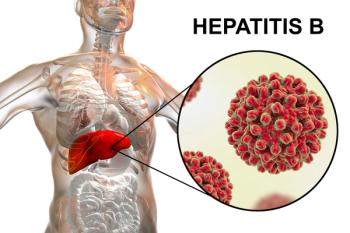
How Pharmacists Can Encourage the Disposal of Unused Prescriptions
By heading off the misuse of unused medications, pharmacists can play a key role in combatting opioid diversion, accidental poisonings and environmental pollution.
One of the most enlightening statistics about the country’s opioid epidemic comes from a
Of course, pharmacists cannot control the number of opioid prescriptions being written, but you can help educate patients, providers, and the community about the importance of proper disposal of unused prescriptions. Opioids are not the only concern - many other potentially dangerous medications are stolen from homes and misused or sold. Proper disposal can head off this diversion risk, while also preventing the types of accidental poisonings that send
Related:
Many well-meaning consumers dispose of medications by flushing them down the toilet or pouring them down the drain. Through increased education efforts, people are now beginning to realize that those disposal methods can be harmful to the environment.
In addition to increasing awareness about the misuse of unused drugs, pharmacists can educate patients about the easy and efficient disposal methods that some major pharmacy chains such as Walmart are offering to consumers. For example, at-home kits that contain a special powder can be combined with water in a bottle of unused medication, rendering the drug unusable and unavailable; the vial can then be disposed of in household trash - a more ecofriendly option than flushing the medication or pouring it down the drain.
The leftover risks
It is widely accepted that the rapid increase in opioid prescriptions since 2000 was the primary driver of the current nationwide epidemic.Consider this: if all patients took all their medication as prescribed, and properly disposed of any unused portions, would the opioid crisis be as severe as it is today? Considering
Related:
Preventing poisoning and pollution
Disposing of unused and expired medications also prevents accidental poisonings, particularly in children. Fatal drug poisonings have increased by 10%since 2000. Similarly, more than 9,000 children every year are hospitalized due to these poisonings. The Poison Prevention Packaging Act of 1970 legislated child-resistant packaging to reduce accidental poisonings and deaths, but
of accidental poisonings still involve child-resistant packaging.
Leftover prescription drugs not only result in poisonings and potential misuse,but when flushed down the toilet or dumped down the drain, they can pollute drinking water. A study of
Newer, non-toxic disposal options can significantly reduce the environmental impact by offering an alternative to flushing medications down the toilet or drain. When environmentally conscious consumers have access to an easy-to-usedisposal method that’s also ecofriendly, they will be less likely to hold on to leftover medications.
Making proper disposal a priority
Numerous disposal options can be recommended to patients. However, traditional methods such as Take Back Days, kiosks, and mail-back envelopes require patients to transport unused medications to another location or to obtain a special envelope to enclose the drugs and then go to the post office. These extra steps and inconveniences prevent many people from acting as quickly as they should and can lead to keeping medications longer than needed - thereby increasing the risk of diversion and addiction as well as poisonings. In fact, the average length of time that Americans retain a prescription medication is three years. That’s 1,095 days that those pills are at risk for misuse.
By recommending a variety of disposal options to patients, pharmacist can play a pivotal role in fighting the nation’s opioid epidemic - while also protecting children from accidental poisonings and lessening the environmental impact of drug disposal.
John Holaday, Ph.D., is chairman, founder and CEO of
Newsletter
Pharmacy practice is always changing. Stay ahead of the curve with the Drug Topics newsletter and get the latest drug information, industry trends, and patient care tips.











































































































































































































